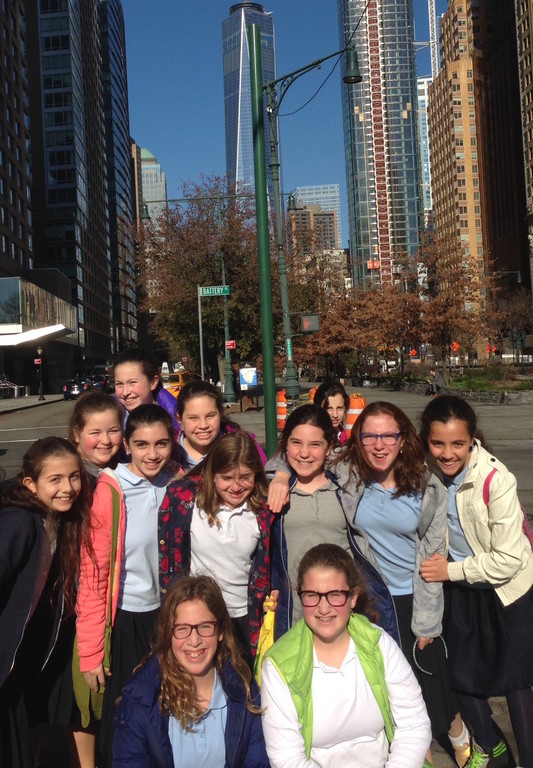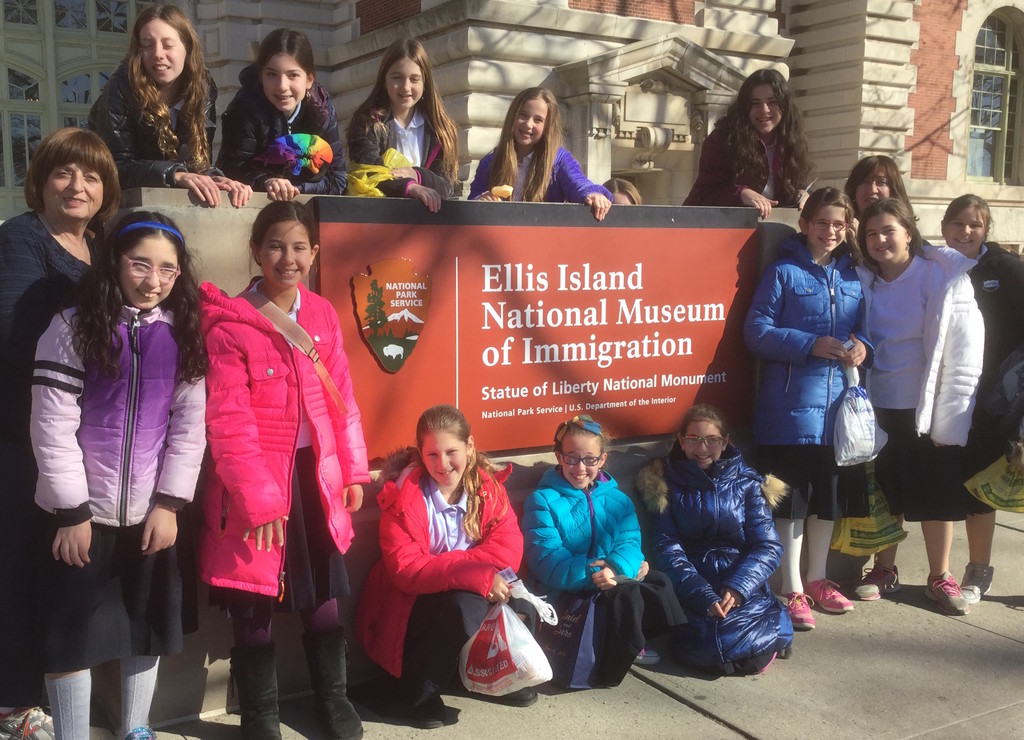New York’s the scene for Shulamith girls
6th graders visit Ellis Island
Sixth graders of the Shulamith School for Girls enjoyed a memorable educational trip to Ellis Island on Nov. 16.
After a remarkably quick bus ride, students made their way through security and boarded the ferry, which offered close up views of the Statue of Liberty and World Trade Center. On the island, they were escorted in small groups by their chaperones and were excited to see some of what they’ve learned and read about come to life.
They tried to pass an immigration test, saw exhibits on the medical exams immigrants had to pass, and viewed a dormitory room that was used to house immigrants who were quarantined and in danger of being sent back to their countries of origin.
The weather was beautiful, so each group was able to go outdoors and eat lunch near the Wall of Honor overlooking the harbor.
For many students, the highlight of the trip was listening to Mrs. Gottlieb, grandmother of sixth grader Elisheva Feinberg, describe her own experience arriving in New York harbor in the last days of December, 1947, just after a record-breaking blizzard had shut down the city on Dec. 26. It had taken two weeks for the ship, loaded with survivors of the Holocaust, to sail from Bremen, Germany, to New York.
Mrs. Gottlieb remarked on how the passengers had been miserably seasick, but when the Statue of Liberty was sighted, everyone came on deck to see it. She also explained that her father initially did not pass the medical inspection on Ellis Island, and the family agreed that if he wasn’t allowed to enter the country, they would all go back to Europe with him. Fortunately, Mrs. Gottlieb’s uncles arrived and were able to convince the officials to allow their brother and his family to enter the United States.
Heritage tour at Battery for 7th grade
Seventh graders of Shulamith School for Girls traveled to the Museum of Jewish Heritage in Battery Park on Nov. 16, where they learned about Jewish life before and during the Holocaust.
They saw artifacts depicting the vibrant communities that existed before World War II, communities very much like our own, with charitable organizations, shuls, shochtim and mikvaot.

 44.0°,
Mostly Cloudy
44.0°,
Mostly Cloudy 







